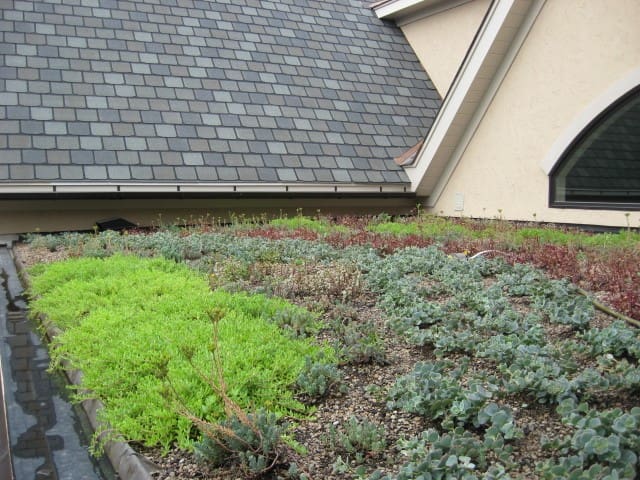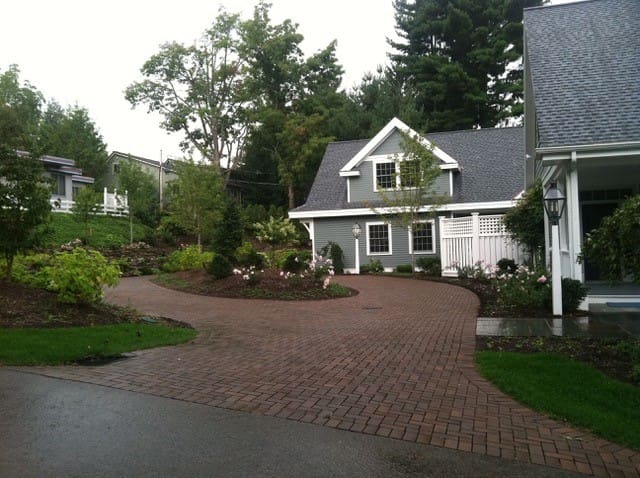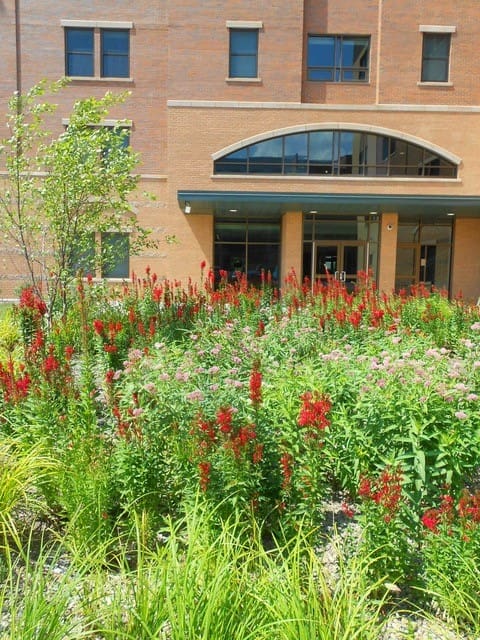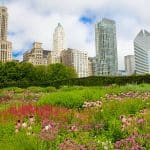
All landscapes start in the design phase and landscape architects and designers can be influential in how outdoor spaces are crafted and how they impact the areas around them.
As for the future of landscapes, sustainability is the most important element landscape architects and designers see moving forward. Joe Hanauer, ASLA, owner of Landscape Architecture, LLC, based in Madison, Wisconsin, elaborates that sustainable practices and designs can include everything from permeability in paving to the use of trees for shade and windbreaks.

Andrea Mueller, CPLD, owner of Inside Out Landscape Design, based in Frankfort, Kentucky, says she’d like to see the usage of more meadows and also dispel the myth that native landscapes require no maintenance.
“As we see an increase in diseases and pests, plant diversity is more important now than it ever has been,” says Dave Marino, LA, owner of Dahlkemper Landscape Architects & Contractors based in Erie, Pennsylvania. “All landscape designers need to be aware and plant a diversity of types and varieties of plants. The benefit of using native plants is most important but utilizing some nonnatives that are not invasive is also important. If we can diversify the landscape with good plants both native and some nonnative, I believe as the climate fluctuates and pests evolve that the diversity of plants will help to withstand the challenge and survive longer.”
Incorporating Green Infrastructure
As the awareness of the value of green spaces increases, so does green infrastructure from green walls to pocket parks. This allows humans to reengage with nature and improve their quality of life.

“Urban spaces are seeing the value of greens spaces as it is evident along the reclaimed riverfronts and brownfields across many cities,” Marino says. “These once vacant and void spaces are now attractive green spaces and parks with plenty of activity.”
Mueller says she’d like to see this green infrastructure be present in smaller communities as well.
“You go to big cities, and you see great landscape architecture and design,” Mueller says. “It would be nice to have it more accessible to smaller communities and incorporate those great design ideas there because design is so important. We all want to go to beautiful places and so if we can make that happen all over the place and not just make it a big city thing, then that would be amazing.”
Marino and Hanauer would also like the profession of landscape architecture to become more prominent and better understood as to what they can add to a project.
“Landscape architects can help to not only preserve the natural landscape and ecosystems but also to integrate those systems into the new developments while keeping a practical design aspect at the same time,” Marino says. “Too often landscape architecture is thought of as a finishing aesthetic touch instead of a crucial preliminary development aspect that challenges the design to be sensitive, respectful and integrated with and into our natural systems.”
Hanauer says there’s a lot that landscape architects can affect when it comes to the microclimate of the site with their designs.
“What I want to see in the next five to 10 years is just a better understanding of what we can add to a project early in the stages,” Hanauer says. “There might be a time when we step out of the project while the house gets designed or buildings get designed and then we step back in.”
Mueller adds that just by advocating for more sustainable designs and creating ecological landscapes they can help the environment.
“I would love to see horticulture being incentivized in property development beyond common screening requirements,” says Dan Maffei, CPLD, principal of Maffei Landscape Design, LLC, Kennett Square, Pennsylvania. “For instance, considering mature or proposed tree canopy in the calculations for stormwater management or layered plant communities for steep slope preservation that would benefit the owner with smaller management structures or building density or height bonuses.”
Creating Resilient Spaces
In the next five to 10 years, it is expected that water conservation and management will be a concern, regardless of location.
“In some parts of the country laws are enacted because of its scarcity, in others its surplus,” Maffei says. “Here in the mid-Atlantic water conservation laws come primarily in stormwater management ordinances enacted by local municipalities mandated at the state level with the intent of mitigating regionalized flooding, erosion and pollution.”

In areas that struggle with flooding more than drought, design practices that help hold the water and prevent it from rushing into spaces will help with water quality.
“Controlling how fast the water gets to places helps,” Hanauer says. “We can control that with bioswales, with detention ponds, with permeability, with rain gardens, with all kinds of different design tools that we can use to start to control those things.”
Not only will the landscape need to be designed with water in mind, but resiliency toward natural disasters and other challenges.
“If they’re able to bounce back, that’s better for everyone,” Mueller says. “Then we’re not replacing plants and wasting the whole growing time and the pots and the shipping and all that. Resiliency is critical.”
Marino says natural disasters are increasing in frequency not only because of climate fluctuations but also because people have expanded into more remote and sensitive areas without considering the environmental impact.
“Property owners, developers, architects and contractors need to be more understanding and respectful of landscapes that are fragile and unsuitable for development,” Maffei says. “Our economic and societal growth is putting more and more pressure to expand into places where the holding capacity of the land is being exceeded and we have to ask ourselves, ‘Is this the best use of the site?’”
This article was published in the May/June issue of the magazine. To read more stories from The Edge magazine, click here to subscribe to the digital edition.


